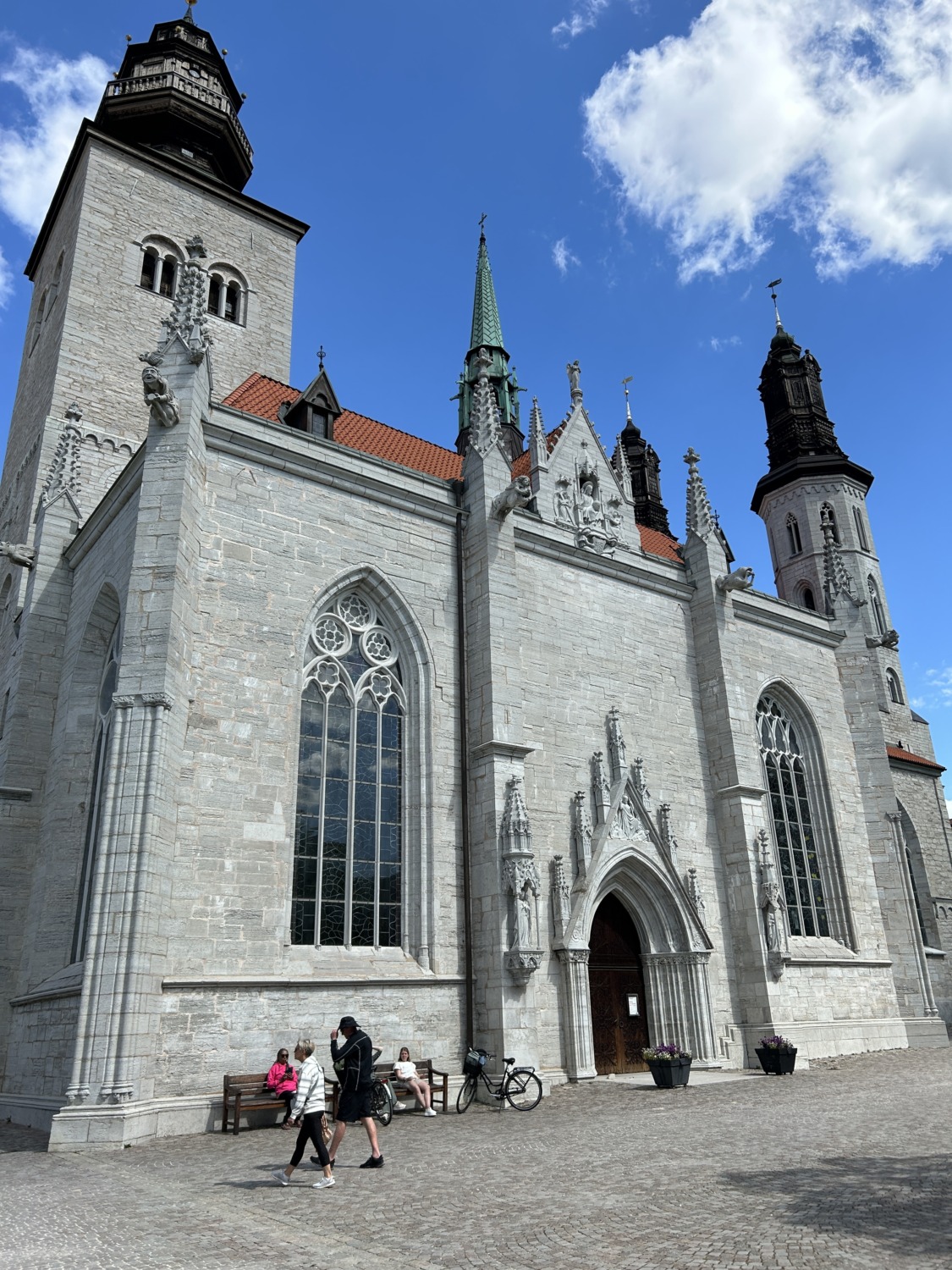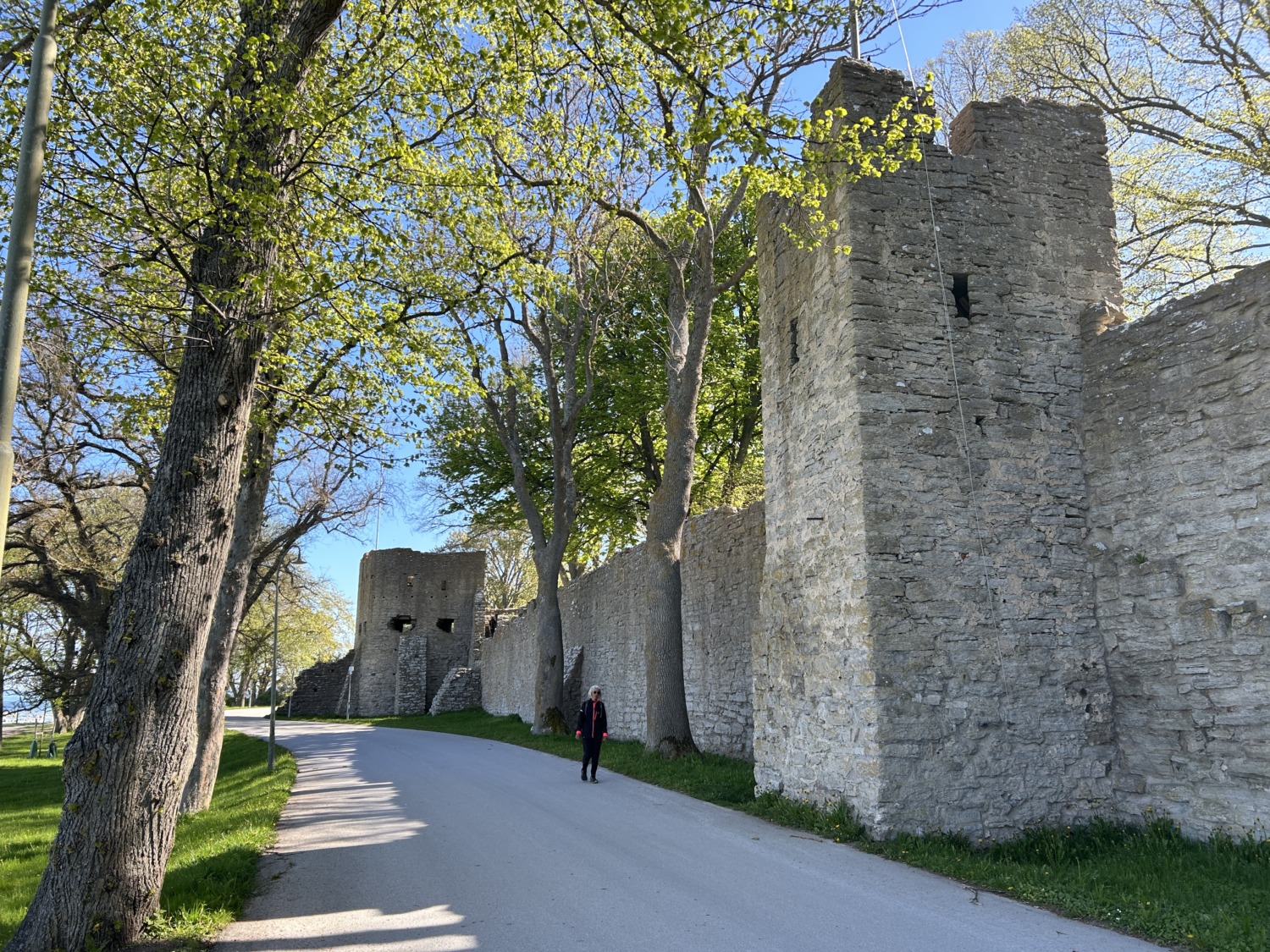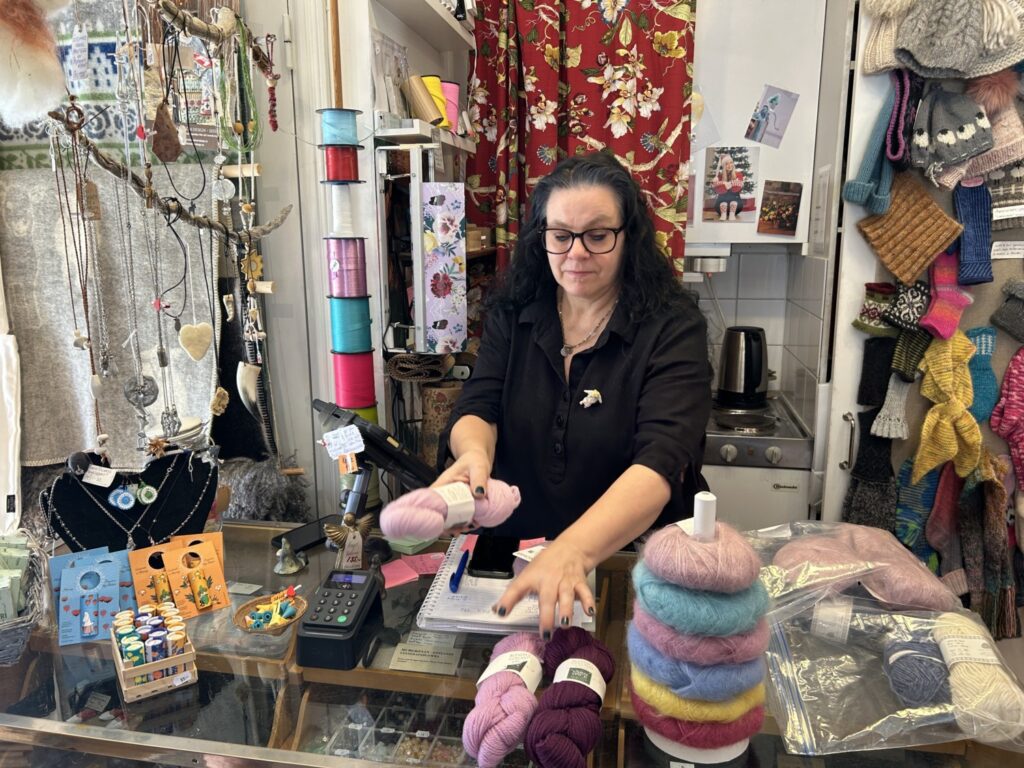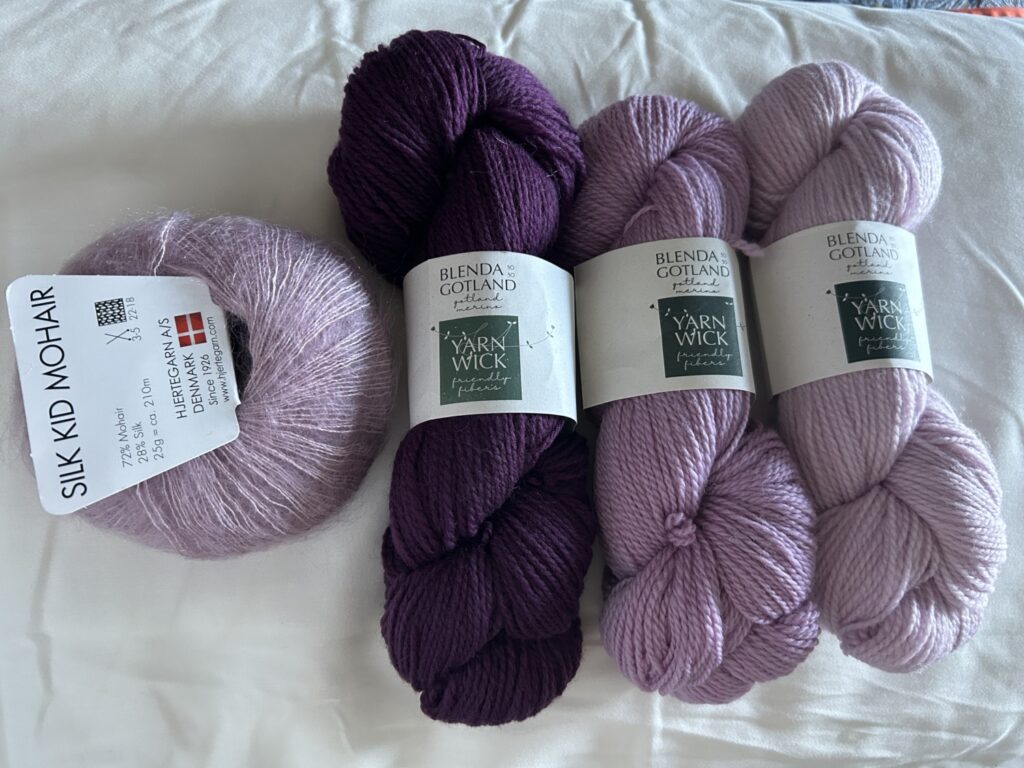After the overwhelming size of Stockholm, it was nice to visit Visby, Sweden the next day. Visby is the best-preserved medieval city in Scandinavia. It was a Hanseatic town in the middle ages, and was very wealthy with access to trade goods from all over Europe. Because of this wealth, the people of the town built a wall to protect the city. The wall, and the old town were added to the UNESCO World Heritage Site list in 1995.
Visby is on the island of Gotland in the Baltic Sea. As such, it was the main center for the Hanseatic League in the Baltic. The wall, built from the 12th to 14th centuries, still largely surrounds the old town. Inside the wall are more than 200 warehouses and wealthy merchants’ dwellings from the same period. Because of its location on an island and the decline of the Hanseatic league, the old buildings are well-preserved. People didn’t tear them down because there wasn’t any money to build better ones.
In 1361, Gotland was conquered by Valdemar IV of Denmark. 1,800 Gotlanders were killed in battle in front of the city. Valdemar tore down part of the wall, set up three huge beer barrels and threatened to turn his men loose to pillage the town unless they were filled with silver and gold. The Visby city fathers fulfilled the demand, with churches stripped of their valuables. Valdemar added “King of Gotland” to his title list.
In 1391, 1394 and 1398, Visby was taken and plundered by the Victual Brothers, pirates who sailed the Baltic Sea. An invading army of Teutonic Knights conquered Gotland in 1398, destroyed Visby and expelled the Victual Brothers. In 1409, Grand Master Ulrich von Jungingen of the Teutonic Knights guaranteed peace by selling the island of Gotland to Queen Margaret of Denmark, Norway and Sweden.
In 1411, the Norwegian, Danish and Swedish King Eric of Pomerania had the castle of Visborg constructed, and settled himself there for 12 years. During his rule, the city became a pirates’ nest, and commerce halted. In 1470, the Hanseatic League rescinded Visby’s status as a Hanseatic town.
The wall itself is over 2 kilometers long. Tom and I started our visit to Visby by walking around the outside of the entire wall. It was a beautiful morning and the old city is surrounded by green space, which make it a walk in the park. Along the wall were waysides in Swedish and English that described the towers and when they were built. There were also helpful maps showing each section of town. Once we circumnavigated the wall, we entered the old city to explore.
Visby has a main church, St. Mary’s Cathedral, that was constructed in the 1100’s and is still in use. It was reshaped as the town increased its wealth, and attained its current appearance in 1225. Four other churches were also constructed, which tells you something about the wealth of Visby. The other four churches, however, became ruins as time went by and the fortunes of the city declined.

We saw all of the ruins and St. Mary’s Cathedral. The only ruin that we could enter was St. Karin’s. The tall walls and arches have been stabilized by cables. St. Mary’s Cathedral was small by European standards and many of the elaborate decorations were taken out during the sacking in 1361 and during the Reformation.

Old town Visby still looks very much like it must have in the 13th century. The buildings have been modernized but retain their medieval exteriors. People live in the buildings, and there are lots of restaurants and shops. Tom and I enjoyed walking around the old city, exploring the various shops. We found a bakery that had some excellent looking pastries, but Tom thought it was too early in the day to buy any.
One of the things I really wanted to find was a yarn shop. The island of Gotland is known for its Gotland sheep and I wanted to get some yarn made with Gotland wool. We found a yarn shop very close to the bakery. The Swedish word for yarn is Garn, so it was easy spot Ringmuran’s Garn and Presentbodi. Fortunately the owner spoke English and she helped me find some Gotland yarn that I can use for hats. I enjoyed talking with her and admiring her beautiful yarns and knitted goods for sale.
Tom and I headed to the Gotlands Museum, which helped fill out our knowledge of Visby’s history. The Museum was built on a medieval warehouse and still had the original storeroom and cellar in the building. The museum was very well done and interesting, moving from one room to another in close to chronological order.
Our stay in Visby was short, so Tom and I kept a close watch on the time. We didn’t want to waste time by eating at a restaurant, but after four hours walking around we were hungry. I was also trying to find a demitasse spoon, since we would not be in Sweden again.
We checked out the Tourist information center, and they directed us to a shop that was in the opposite direction to the shuttle bus. It was a tiny little souvenir shop but they did have a spoon. Score! I suggested to Tom that we walk down this street outside the old town just a little more. Maybe we would find someplace to get a bite to eat.
Two more shops over was a bakery and ice cream shop. In fact, the chain of ice cream shops, Glassmagasenet, is the largest in Europe. They had 260 different flavors of ice cream on display, not in tubs, but in fresh rectangular shapes. Tom decided to get a kanelbulle, but I had to try the ice cream! I chose two flavors, and I’m not sure what I got because they only had the names in Swedish. One was Gotland Royal and the other was Cookies. The Gotland Royal was a yummy chocolate and Cookies had an interesting mix of marshmallow and some kind of chocolate cookie. Tom was happy with his kanelbulle, but it was a warm enough day that the ice cream tasted wonderful. After enjoying our dessert before our lunch, we climbed back on the shuttle and headed back to the ship.
Tom and I enjoyed our day in Visby very much. It was interesting to learn some history and find some things we wanted to buy. Visby is a well-preserved medieval city with a modern heart. Well worth a visit.









One comment